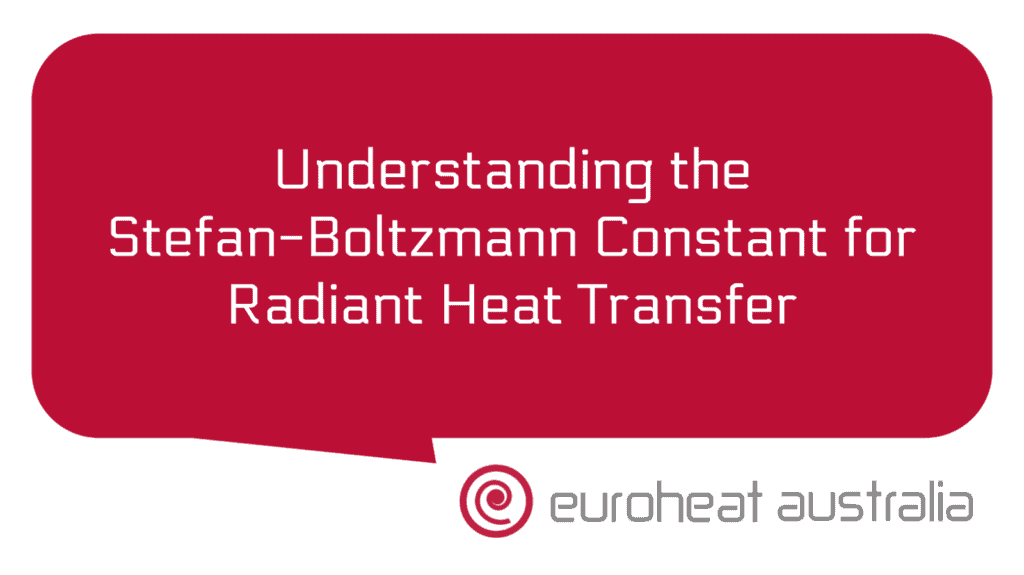If you’re a homeowner in Australia, you’ll likely have heard of the Stefan-Boltzmann Constant – but do you really understand what it means? Put simply, the Stefan-Boltzmann Constant is a number that relates to the amount of energy that an object emits as thermal radiation. It is used to calculate the rate of radiant heat transfer, which is why it’s so important when it comes to installing underfloor heating.
To start with, let’s look at what radiant heat transfer actually is. Radiant heat transfer occurs when energy is transferred from one object to another without the need for any physical contact between them. This means that objects can exchange energy without direct contact, which is why it’s so useful for underfloor heating systems. By using radiant heat transfer, heat can be transferred from a warm source (such as hot water pipes) to an area beneath the floor in your home. This allows you to enjoy comfortable temperatures without having to use electric heating or air conditioning systems.
The Stefan-Boltzmann Constant is used to calculate the rate at which energy is exchanged during radiant heat transfer. In simple terms, this number tells us how much energy (in watts per square metre) will be exchanged between two objects at a given temperature difference between them. The formula for this constant is:
σ = 5.67 x 10^-8 W/m2K4
Where σ = Stefan-Boltzmann Constant
W = Watts
m2 = Square metres
K4 = Temperature difference in Kelvin raised to the power of 4
This formula allows us to calculate how much energy will be exchanged between two objects based on their temperature difference and surface area – which makes it incredibly useful when designing underfloor heating systems. With this knowledge, engineers are able to design systems that are both efficient and cost effective, leading to significant savings on energy bills and reduced running costs over time.
Now that we understand how important the Stefan-Boltzmann Constant is when designing underfloor heating systems, we can start looking at some of the benefits they offer homeowners in Australia:
– Increased comfort: Underfloor heating provides even temperatures throughout your home, eliminating cold spots and allowing you to enjoy a comfortable environment all year round;
– Energy savings: As we saw earlier, using radiant heat transfer with an understanding of the Stefan-Boltzmann Constant allows engineers to design efficient systems that require less energy than other traditional forms of heating;
– Cost savings: Not only do these systems use less energy than other forms of heating but they also require minimal maintenance – meaning lower costs over time;
– Space saving: Installing a hydronic underfloor system takes up far less space than traditional air conditioning or electric heating systems;
– Eco friendly: Radiant heat transfer does not produce any harmful emissions which makes these systems attractive options for those looking for eco friendly solutions;
– Design flexibility: Underfloor heating can be designed around any space and layout requirements – making them perfect for renovations and new builds alike.
Of course, choosing an experienced engineer or installer like Euroheat Australia will help ensure you get all these benefits from your underfloor system – they have 30 years of experience designing and constructing hydronic cooling & heating systems so you know your project will be finished with expertise and precision! With Euroheat Australia on your side you can rest assured knowing that your new installation will provide maximum efficiency and cost effectiveness while keeping your carbon footprint low!





